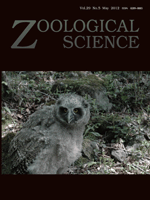The Blakiston's fish owl (Bubo blakistoni) population on Hokkaido Island, Japan, decreased to less than one hundred individuals over the last century due to habitat disruption by human activity. Although the ongoing conservation management has slightly restored the population, it remains endangered. In order to assess the genetic variation and population structure of the Blakiston's fish owl in Hokkaido, we genotyped eight microsatellite loci on 120 individuals sampled over the past three decades. The genotype data set showed low levels of genetic variation and gene flow among the geographically isolated five subpopulations. Comparative analysis of past and current populations indicated that some alleles shared by past individuals had been lost, and that genetic variation had declined over the last three decades. The result suggests that the genetic decline may have resulted from inbreeding and/or genetic drift due to bottlenecks in the Hokkaido population. The present study provides invaluable genetic information for the conservation and management of the endangered Blakiston's fish owl in Hokkaido.
How to translate text using browser tools
1 May 2012
Temporal Changes of Genetic Population Structure and Diversity in the Endangered Blakiston's Fish Owl (Bubo blakistoni) on Hokkaido Island, Japan, Revealed by Microsatellite Analysis
Keita Omote,
Chizuko Nishida,
Takeshi Takenaka,
Ryuichi Masuda

Zoological Science
Vol. 29 • No. 5
May 2012
Vol. 29 • No. 5
May 2012
Blakiston's fish owl
Bubo blakistoni
genetic diversity
microsatellite
population structure




